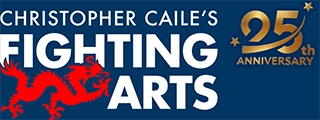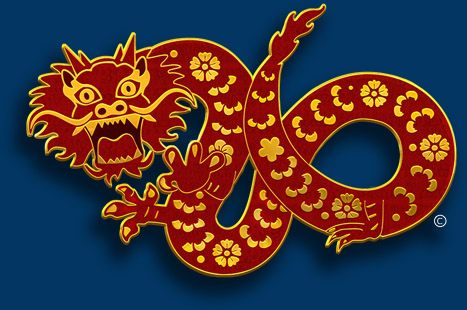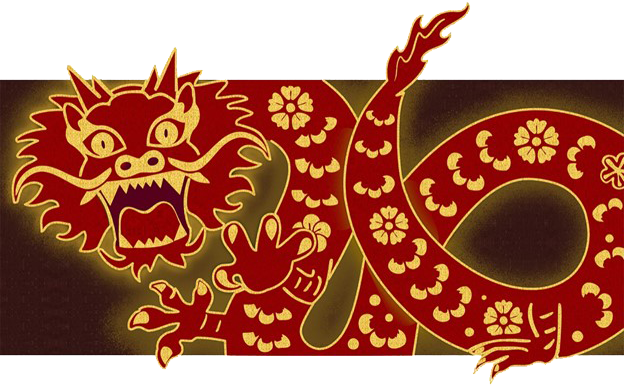Enter The Bubishi
Part 2 – The Text & Its Impact On Okinawa
By Victor Smith and Christopher Caile
Editor’s Note: This is the second article in a three part series on the bubishi. Part 1 discussed the book’s origin and introduction through the writings of many early 20th century karate masters. Part 3 will discuss the availability of translations of the text in English, the text’s impact on karate today and the current status of research on this text.
The bubishi has over 30 chapters (depending on the edition) that focus on a wide variety of topics, including martial history, fighting strategy, vital point striking, hand positions, essential fighting techniques, grappling and escapes, herbal medicine treatment, forms and techniques and martial code. It also offers some history on the White Crane and the Monk Fist Kung Fu arts.
Patrick McCarthy in his translation of the text (“bubishi: The Bible Of Karate”) has organized the book’s information into four general categories, or parts. He also includes an Introduction and historical perspective. These parts include:
Part 1- Articles on history, concepts, strategy and philosophy including White Crane and Monk Fist Kung Fu.
Part 2- Articles, examples, definitions, diagrams and recipes for Chinese medicine, specific remedies and herbal pharmacology, including the concept of 12 hours chi (energy) flow (shichen cycle).
Part 3- Vital points including types, locations, diagrams, periods for attack, restricted locations, and delayed death touch.
Part 4- Fighting techniques, a list of kata moves, eight principles, maims, principles, six open hand positions, 48 self-defense diagrams, and Shoalin hand and foot, muscle and bone training postures.
While many topics are discussed, most of the information is presented in outline form and thus for most readers will seem incomplete. For this reason many of the topics can not be fully understood from the limited information presented. For example, while the bubishi offers many illustrations of vulnerable points, it does not explain how to strike them, or what technique to use. Thus many important details behind these practices are missing.
This lack of detail lends some credence to the theory that the bubishi may have been a personal notebook rather than a textbook. If the author had been in a martial training program, the notes taken would have been cryptic, something designed to work as a mnemonic device for future reference.
But the reader should not be discouraged, for there are some fascinating chapters. For example, the bubishi presents the principle of striking vital points according to the Shichen theory of Traditional Chinese Medicine. The theory states that body energy (chi in Chinese or ki in Japanese) flows in natural cycles or tides through the body and its organ systems, with each 24 hour cycle being divided into 12 two hour periods. Based on this theory, certain points are more active and more deadly during certain two hour periods. Thus knowledge of where the Chi flow is during a particular Shichen cycle allows the martial artist to locate the most vulnerable points which could be struck. Both the points and the optimum time for striking them are illustrated. The text often suggests death as the outcome, immediately or after differing periods of time after being struck. (1)
In a different light, certain sections of the bubishi could be seen as a medical text. The charts showing where to strike vital points, the charts showing the vulnerability of those points during specific Shichen, as well as the “correct” treatment for those injuries might suggest the points are shown only for medical treatment purposes.


Another section purportedly shows secret points that can be struck that will have a killing effect one-half or one year later. In some Chinese arts this is known as the “Death Touch,” or “Dim Mak.”
The bubishi also contains considerable information relating to fighting. It contains lyrical descriptions of forms: some versions of the bubishi show a diagram of techniques, possibly from a form (kata). There are also discussions of combat principles and a lengthy discussion on grappling and escapes.
Another interesting segment includes 48 Self Defense Diagrams. In each case the outcome of an encounter is shown. Both the winning and losing technique are listed along with a short synopsis of the strategy that led to victory. Here again, however, there is minimal discussion about how techniques can be applied.

Some authorities suggest that the practice of Okinawan Karate may have been influenced by these 48 diagrams. Many similar techniques can be found in many Okinawan karate kata as well as part of self-defense exercise sets. (2)
There are also chapters explaining herbal treatment for illness and injuries. Except for anecdotal evidence it is not known if these practices work or not. In addition some translators have noted that mistakes have crept into copies of the text, probably as a result of people copying by hand information which they are not familiar. (3)
I would suggest that these herbal formulas should be carefully examined and not be experimented with, except under the supervision of a trained expert in Traditional Chinese Medicine knowledgeable in herbal formulations.
The Impact Of The bubishi On Okinawa
We know the bubishi existed, but how do we track the actual influence it had on the development of the Okinawan arts?
We know that some important karate masters in the past possessed copies of the bubishi, but there are no published notes, direct studies, or even oral history on the text’s influence available for our review. Also, exactly who and how many people possessed copies of the text is open to which “legends” one wishes to listen to.
Thus many questions arise:
Was the bubishi truly kept private for the select few?
Were those who possessed the bubishi sufficiently literate to read and understand the text which was written in an older style Chinese dialect? And if they could read the text, did they possess enough knowledge of Traditional Chinese Medical theory to use and apply the information?
Was the bubishi used to design training, such as teaching the defensive theories directly to the students? Or was the bubishi little more than a learned curiosity, something valued but not understood, something to be placed on the shelf to be revered but not actually used?
Without historical proof, it is very difficult to know the truth. We know that Mabuni, Funakoshi and Yamaguchi felt the bubishi was important enough to “announce” its existence by including portions of the text in their own works. Others famous masters, such as Higaonna, Itosu, Nakamura and others also had the text and passed it on to their most trusted students.
Miyagi Chojun also felt so strongly about the bubishi that he reportedly took the term “Goju” from it as the name for his system of training. According to Patrick McCarthy (The Bible Of Karate: bubishi), Miyagi took the name Goju from a section of the bubishi titled, “The Eight Precepts of Quanfa” which speaks of inhaling as representing softness (“Ju” of Goju) and exhaling as characteristic of hardness (“Go” of Goju). (4) Others suggest, however, that while Miyagi was influenced by the bubishi, he took his style name from other sources. (5) Material in the bubishi may also have provided Miyagi with inspiration for developing his famous Tensho (Rolling Hands) kata.
Tatsuo Shimabuku (the founder of Isshinryu) chose the eight poems of the fist (Chapter 13) of the bubishi to be the Isshinryu Code of Karate.
But not everyone considers the bubishi to be influential. Miyazato Eiichi, a long time student of Miyagi and one of the principal inheritors of his system, believed the bubishi was not important. He did not have a private copy, however, and said that he had only seen it a few times. (6)
As to the impact of the bubishi’s sections pertaining to chi meridian theory, there is no evidence that they were used in the historical development of Okinawan karate. Certainly there existed knowledge of vital points and methods to strike them which relate to acupuncture points. But, there is no evidence that this knowledge was taken to a much more complicated level which involved understanding not only concepts of energy flow, but also related timing patterns. From what I’ve heard, there is no evidence that the Okinawans ever referred to the Meridian charts.”
There have been many explanatory books and commentaries written on the bubishi in Japan, none of which are available in English. I also strongly suspect there are many instructors who have prepared extensive analyses concerning the bubishi, but this information is not readily available to the martial arts community. A great deal of time is likely being spent following the same lines of thought over and over again due to the unavailability of research and analysis of the texts contents and theory.
Author’s Note
This article was initially authored by Victor Smith, but was edited with contributions of commentary, images and photo captions by Christopher Caile.
Footnotes:
(1) Christopher Caile in a communication with this author has noted that in addition to the 24 hour cycle of Chi, what is also important but unstated in the bubishi, is that chi theory (in Traditional Chinese Medicine) also includes a larger yearly cycle that greatly influences the daily cycle. Thus a technique based on the daily cycle will be much more effective when done at a certain period of the year. This, however, is not discussed within the bubishi.
(2) Conversation with George Donahue, a member of the Kishaba Juku organization, related the following observation about the bubishi to Christopher Caile: His organization has passed down the work for five generations, having made hand copies of the manuscript along with many notes. Donahue believes, however, that the most useful information is contained within the notes (overlays of onion skin with notes) themselves. Included are critiques of information within the bubishi including what works and what doesn’t. Thus, while the bubishi is considered important in itself, it did not significantly influence his organization or its teachings. One of the bubishi copies, Donahu noted, was originally from Nakamura sensei. Another one passed down is from the late Kishaba sensei. Donahue’s teacher and head of the organization, Shinsato sensei, has collected, annotated and bound a lot of information on the bubishi and other texts.
(3) Miyagi was well aware of the bubishi and even quoted from the book in an August 1942 essay that appeared in “Bunka Okinawa” that was titled “Breathing In And Breathing Out In Accordance With “Go” And “Ju”: A Miscellaneous Essay On Karate.” Notice the similarity of the essay’s name with the section from the bubishi after which Miyagi is reputed to have named his style. It is perhaps this similarity that led some to suggest that “Goju” as the name for Miyagi’s style came from this source.
(4) A more likely derivation for Goju karate’s name lies elsewhere. Representing Miyagi at a 1930 All Japan Martial Arts Exhibition was his senior student Jinan Shinzato who was asked the name of his ryuha (school). Shinzato. The style having no formal name at the time other than association with its Nahate, Surite and Tomorite lineage, and Shinzato replied to the question, “Goju” (meaning hard/soft). This was later related to Miyagi, who adopted the name. Others, however, suggest that Shinzato never gave an answer to the question about the name of his ryuha and that Miyagi later coined the name after thinking the problem over.
(5) Information supplied by Christopher Caile. In 1992 Caile had a private
translation made of the 39 pages from the bubishi that appeared in Yamaguchi’s book, “Karate-Goju-Rui By The Cat.” The translator, who is well versed in Chinese herbal medicine, noted numerous inconsistencies , possible errors, as well as the names of herbs not generally recognized. It was suggested that these unknown herbs might have been local herbs, or local names for well-known herbs. Furthermore some methods of preparation are not fully explained.
(6) From a private interview of Miyazato by Christopher Caile held in Naha, Okinawa, while Mr. Caile was studying in Miyazato’s dojo in December, 1994.
Victor Smith
Victor Smith is a respected teacher of Isshinryu karate (6th degree black belt) and tai chi chuan with over 26 years of training in Japanese, Korean and Chinese martial arts. His training also includes aikido, kobudo, tae kwon do, tang so do moo duk kwan, goju ryu, uechi ryu, sutrisno shotokan, tjimande, goshin jutsu, shorin ryu honda katsu, sil lum (northern Shaolin), tai tong long (northern mantis), pai lum (white dragon), and ying jow pai (eagle claw). Over the last few years he has begun writing on, researching and documenting his studies and experiences. He is the founder of the martial arts website FunkyDragon.com/bushi and is Associate Editor of FightingArts.com. Professionally he is a business analyst, but also enjoys writing fiction for the Destroyer Universe.
About the Author Christopher Caile
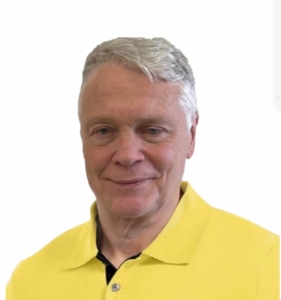
Screenshot
Christopher Caile is the Founder and Editor-In-Chief of FightingArts.com. He has been a student of the martial arts for over 65 years.
He first started in judo while in college. Then he added karate as a student of Phil Koeppel in 1959 studying Kempo and Wado-Ryu karate. He later added Shotokan Karate where he was promoted to brown belt and taught beginner classes. In 1960 while living in Finland, Caile introduced karate to that country and placed fourth in that nation’s first national judo tournament.
Wanting to further his karate studies, Caile then hitch hiked from Finland to Japan traveling through Scandinavia, Europe, North Africa, the Middle East and South and Southeast Asia — living on 25 cents a day and often sleeping outside.
Arriving in Japan (1962), Caile was introduced to Mas Oyama and his fledgling full contact Kyokushinkai Karate by Donn Draeger, the famous martial artist and historian. Donn also housed him with several other senior international judo practitioners. Donn became Caile’s martial arts mentor, coaching him in judo and introducing him to Shinto Muso-ryu under Takaji Shimizu.
Caile studied at Oyama’s honbu dojo and also at Kenji Kurosaki’s second Tokyo Kyokushinkai dojo. In his first day in class Oyama asked Caile to teach English to his chief instructor, Tadashi Nakamura. They have been friends ever since. Caile also participated in Oyama’s masterwork book, “This Is Karate.”
Caile left Japan with his black belt and designation as Branch Chief, the first in the US to have had extensive training in Japan directly under Oyama Sensei. As such, Oyama Sensei asked him to be his representative on visits to his US dojos to report on their status.
A little over a year later, Nakamura, Kusosaki and Akio Fujihira won an epic David vs. Goliath challenge match against Thailand’s professional Muay Thai Boxers in Bangkok, Thailand, thrusting Kyolushinkai and Nakamura into national prominence.
Back in the US Caile taught Kyokushinkai karate in Peoria, Il while in college and later in Washington, DC. while in graduate school. Durimg this time Shihan Nakamura had moved to New York City to head Kyokushinkai’s North American Operation.
In 1976 when Kaicho Tadashi Nakamura formed the World Seido Karate organization, Caile followed. Living then in Buffalo, NY, Caile taught Seido karate and self-defense at the State University of New York at Buffalo (SUNY Buffalo) for over 15 years where he also frequently lectured on martial arts and Zen in courses on Japanese culture.
Caile moved to New York City in 1999 to marry Jackie Veit. He is now an 8th degree black belt, Hanshi, training in Seido Karate’s Westchester, NY Johshin Honzan (Spiritual Center) dojo. In Seido Caile is known for his teaching of and seminars on kata applications. He also produced a 14 segment video series on Pinan kata Bunkai currently available to Seido members.
Caile is also a long-time student and Shihan in Aikido. He studied in Buffalo, under Mike Hawley Shihan, and then under Wadokai Aikido’s founder, the late Roy Suenaka (uchi deshi under Morihei Ueshiba, founder of Aikido and was Shihan under Tohei Sensei). In karate, Suenaka (8thdan) was also an in-house student of the Okinawan karate master Hohan Soken.
Having moved to New York City, Caile in 2000 founded this martial arts educational website, FightingArts.com. Twenty-five years later, in 2025, it underwent a major update and revision.
For FightingArts.com and other publications Caile wrote hundreds of articles on karate, martial arts, Japanese art, Chinese Medicine and edited a book on Zen. He also developed relationships with a cross section of leading martial arts teachers. Over the last four decades he has conducted extensive private research into karate and martial arts including private translations of the once secret Okinawan hand copied and passed on Kung Fu book, the Bubishi, as well as an early karate book by the karate master Kenwa Mabuni. He periodically returns to Japan and Okinawa to continue his studies and participate Seido karate events. In Tokyo he practiced (with Roy Suenaka Sensei) in a variety of aikido organizations with their founders – including private interviews and practices at the Aiki-kai Aikido Honbu dojo with the son and grandson of aikido’s founder, Doshu (headmaster) Kisshomaru (an old uchi-deshi friend) and his son, Moriteru Ueshiba and in Iwama with Morihiro Saito. On Okinawa he studied Goju Ryu karate under Eiichi Miyazato, 10th dan founder of Naha’s Jundokan, and also with Yoshitaka Taira (who later formed his own organization, who specialized in kata Bunkai. While there Caile also trained with Hohan Soken’s senior student, Master Fusei Kise, 10 dan as well as with the grandson of the legendary karate master Anko Itosu.
Caile’s other martial arts experience includes: Diato-ryu Aikijujitsu and Kenjitsu, kobudo, boxing, Muay Thai, MMA, Kali (empty hand, knife and bolo), study of old Okinawan Shoran-ryu & Tomari body mechanics, study of old Okinawan kata under Richard Kim, study of close quarter defense and combat, including knife and gun defenses, Kyusho Jitsu and several Chinese fighting arts including 8 Star Praying Mantis, Pak Mei (White Eyebrow), and a private family system of Kung Fu.
Caile is also a student of Zen as well as a long-term student of one branch of Traditional Chinese Medicine, Chi Kung (Qigong). As one of two senior disciples of Chi Kung master Dr. Shen (M.D., Ph.D.) Caile was certified to teach and practice. This led to Caile’s founding of the The Chi Kung Healing Institute on Grand Island, NY. In Western NY, he also frequently held Chi Kung seminars, including at SUNY Buffalo and at the famous Chautauqua Institution in Chautauqua, NY. His articles on Chi Kung also appeared in the Holistic Health Journal and in several books on alternative medicine.
Caile holds a BA in International Studies from Bradley University and MA in International Relations with a specialty in South and Southeast Asia from American University in Washington, D.C. While in Buffalo, NY he also studied digital and analog electronics.
In his professional life Caile also worked in public relations and as a newspaper reporter and photographer. Earlier he worked in the field of telecommunications including Managing a Buffalo, NY sales and service branch for ITT. He then founded his own private telephone company. This was followed by creation of an electrical engineering company that designed and patented his concept for a new type of low-cost small business telephone system (which was eventually sold to Bell South). The company also did contract work for Kodak and the US space program. Simultaneously Caile designed and manufactured a unique break-apart portable pontoon boat.
Most recently Caile co-founded an internet software company. Its products include software suites with AI capability for control and management of streaming media, such as video and music, an all-in-one book publishing software product for hardcover, eBook and audio book creation and security software for buildings and government use.
For more details about Christopher Caile’s martial arts, work experience and life profile, see the About section in the footer of this site.
Search for more articles by this author:
